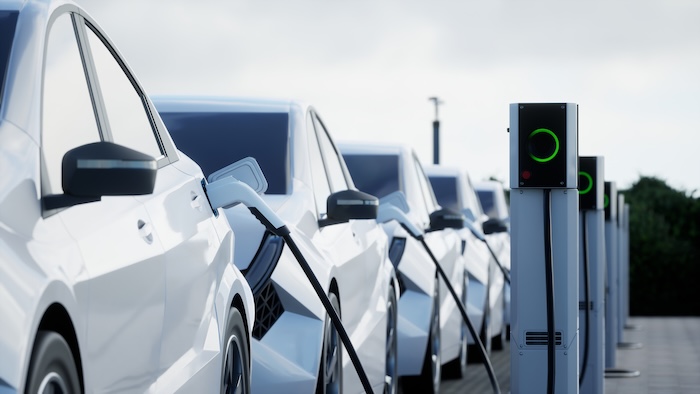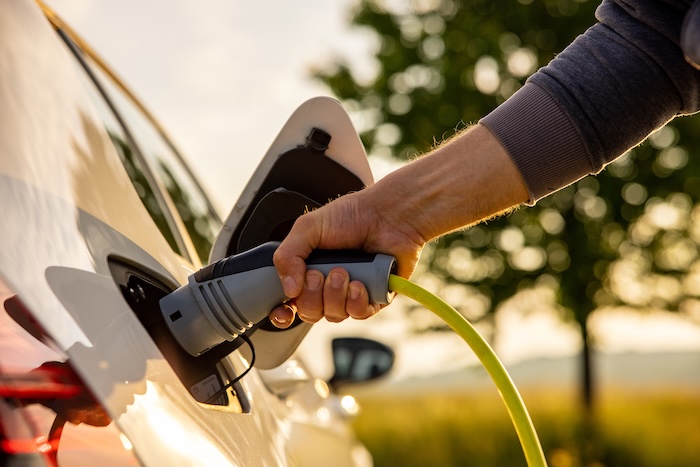Why Electric Vehicles Still Matter in 2025
Despite political shifts and regulatory headwinds, electric vehicles (EVs) remain a foundational component of the clean energy transition. U.S. EV sales saw a solid 11 percent boost in Q1 2025 compared to the same period last year, signaling continued demand. But softening consumer sentiment — only 51 percent of Americans reported interest in owning an EV in 2024, a modest dip from 2023 — has some questioning the sector’s long-term momentum.

Still, the broader picture points to an inevitable electric future. Charging access has improved, with 64 percent of Americans now living within two miles of a public EV charger, and EV sticker prices continue to decline. As these barriers erode and energy demand accelerates — driven by AI, electrification, and the growth of data centers — managed EV charging emerges as a critical tool for utilities. The ability to shift EV charging patterns helps mitigate peak demand, defer costly infrastructure upgrades, and grow the aggregate virtual power plant (VPP) capacity required to meet federal targets by 2030.
EV reliability & the road to consumer confidence
While questions remain around consumer adoption, performance data continues to affirm the reliability of EVs. A recent report found that electric vehicles required roadside assistance at significantly lower rates than gas-powered counterparts. Of the more than 3.6 million incidents reported in 2022, only 1.2 percent involved EVs, with just 4.2 out of every 1,000 EVs experiencing breakdowns.
Environmental arguments in favor of EVs remain strong. Although manufacturing emissions are substantial, lifecycle analyses consistently show that EVs outperform internal combustion engines on total emissions, especially as grid power becomes cleaner. In other words, the long game still favors electric vehicles.
Regulatory reversals & market volatility
In recent months, however, policy reversals have introduced uncertainty. Legal challenges to California’s Advanced Clean Cars II program and Massachusetts’ zero-emission vehicle mandates threaten state-level momentum. Proposals to roll back federal EV tax credits and implement new annual fees for EV owners have also surfaced, adding to the friction.
These shifts have understandably rattled market confidence. While some automakers are recalibrating, new players — both domestic and international — are rapidly filling the gap, offering cost-competitive models that appeal to price-sensitive consumers. As supply chains stabilize and tariffs are restructured, the industry is poised for a rebound.

Managed charging & the power of load flexibility
EVs are more than just a mode of transportation — they’re a grid resource. With the Department of Energy calling for up to 160 GW of VPP capacity by 2030 (up from today’s estimated 30–60 GW), managed charging is key in reaching that goal. Most current VPP capacity comes from distributed energy resources (DERs) like smart thermostats, battery energy storage systems, solar panels, and water heaters. But EVs — especially when aggregated via distributed energy resource management systems (DERMS) — offer one of the most scalable and impactful levers.
Smart charging programs allow utilities to pause or shift EV charging during periods of peak demand, helping to flatten load curves and reduce strain on the grid. Vehicle-to-grid (V2G) technology goes one step further, allowing bidirectional charging that sends stored energy back into the system when needed. Layered with dynamic pricing, these programs can also incentivize consumers to charge during off-peak hours, further enhancing flexibility.
Data-driven forecasting through telematics
What sets EVs apart from other DERs is their rich data potential. Telematics — wireless communication from the vehicle itself — provides utilities with deep insights into charging patterns, battery usage, and vehicle mobility. Unlike stationary EV chargers that only report on activity at a fixed location, telematics data paints a fuller picture of how and when energy is used. These insights are invaluable for grid operators and utility program managers who can use the data to forecast demand spikes and plan more effectively for grid events. As utilities prepare for a more dynamic grid environment, the ability to anticipate and adapt in real-time is paramount.
Final thought
EVs have been part of the American transportation story almost since the beginning. After a long period of dormancy to allow for the technology to catch up, they’ve returned as not just a cleaner option but a smarter and more connected asset for grid modernization. Their role is no longer theoretical — it's essential.
Yes, the road to adoption has its bumps. But technological innovation, consumer interest, and market maturation continue to move in the right direction. And for utilities, EVs offer more than headlines — they offer a practical path to meet rising energy demand, improve system reliability, and lower operational costs through strategic load management. Electric vehicles aren’t just here to stay, they’re here to help power the future.
Brenda Chew is the Director of Product Management at Virtual Peaker, where she focuses on advancing the company's product offerings and capabilities. Prior to Virtual Peaker, Brenda was the Director of Research and Industry Strategy at the Smart Electric Power Alliance, where she led multiple research efforts and executed projects focused on evolving utility programs, integrated distribution planning, and enabling flexible resources along the grid. Brenda has also worked as a consultant covering distributed energy resources, the utility of the future, and grid modernization efforts. Brenda holds an MSc in Sustainable Development from the University of St. Andrews, as well as bachelor’s degrees in both economics, and environmental studies from Emory University.
Virtual Peaker | virtual-peaker.com
Author: Brenda Chew
Volume: 2025 September/October









